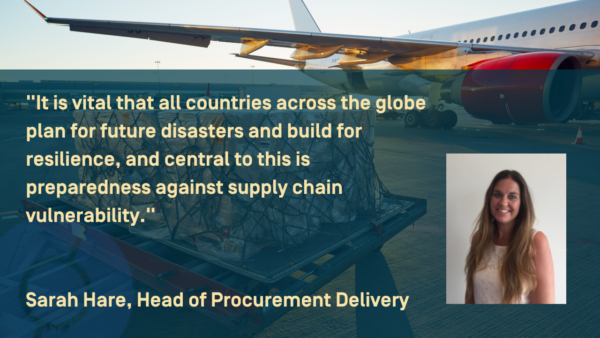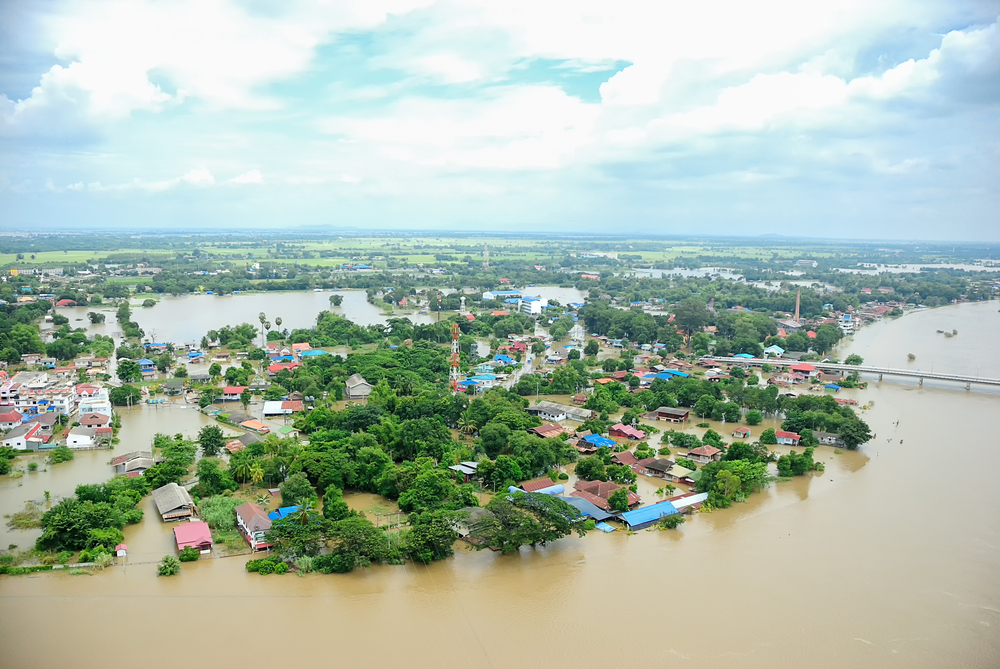For populations living in the Caribbean countries, natural disasters have become a way of life. The next hurricane is a question of when not if, and residents are needing to find new coping mechanisms to prepare and deal with the regular consequences of the disasters.
Crown Agents has been implementing a consultancy project for the Organisation for Eastern Caribbean States Commission (OECSC) to help better prepare their procurement systems for when natural disasters strike. Yet the COVID-19 pandemic has outrightly demonstrated to the world that it is not just countries subject to adverse geographical conditions that should be preparing.
Taking learnings from working on the OECSC programme, Crown Agents’ Head of Procurement Delivery, Sarah Hare, details how the principles applied can be mirrored across the globe – to help strengthen supply chain systems to react immediately, no matter the emergency.
During my 20 years working for Crown Agents, I’ve been at the forefront of responding to numerous humanitarian crises, including the 2014 Ebola epidemic. More recently, I’ve found myself delivering global emergency procurement for health-related goods in response to the COVID-19 pandemic, as well as supporting Caribbean countries build resilient supply chain infrastructures through my role as Project Director on the OECSC programme. Throughout my experience, it has become increasingly clear that the main principles for emergency procurement and supply chain preparedness remain the same no matter the event, whether it be a force of nature, pandemic or epidemic.

Lesson One: Define Emergency Procurement Procedures – Standard procurement procedures tend to be stringent and complex. This will not work for a crisis response. When disaster strikes, we are at the mercy of tight timeframes and of the suppliers and service providers who have what we desperately need! During a preparedness stage, you have the time to set out separate guidelines for emergency procurement. Ensure these are flexible and less rigid, so you can obtain what you need quickly. Including these guidelines in a procurement manual that is accessible to all relevant staff will ensure supply chain personnel can more easily jump into action from the outset of a crisis, knowing exactly what to do.
Lesson Two: Establish A Common Inventory List – We will never be 100% clear on everything that will be needed to respond to an emergency, but we can make some assumptions. For example, through my work on both epidemics and pandemics, I have seen varying clients require similar ICU equipment and consumables, whilst debris clearance equipment and construction materials are commonly needed after a natural disaster. Countries can use their data and knowledge from past emergencies to establish a priority list of commonly procured goods, with approximate quantities, and use it to assess the market for stock in advance of an emergency.
Lesson Three: Identify and Pre-Position Suppliers – Identifying a supplier or service provider can take time, and in an emergency, time is critical! Even once a service provider has been identified, there are several hoops they need to jump through – can they provide the required specification? Do they have suitable lead times? Will they accept contract terms and conditions? Use the time in a preparedness phase to assess the market and distinguish who can provide the priority items identified, meet ethical and financial compliance and deliver in the time scale required. By setting up Framework Agreements pre-disaster, you can also eradicate lengthy procurement processes during an emergency and assist in controlling pricing, which often skyrockets during crises.
Lesson Four: Assure Specifications – Compliance and quality checks may need to be carried out on goods, ensuring products comply to specifications and required international and manufacturing standards. This can be a complex process particularly when dealing with medical goods and Personal Protective Equipment – as we have experienced on our COVID-19 response. If compliance checks can be carried out during Framework tenders prior to an emergency, this will save significant time and prevent complex technical evaluations during a disaster.
Lesson Five: Communicate, Communicate, Communicate – Procurement and supply chain work is pressurised and fast pace at the best of times, let alone in an emergency. Tight project and financial management are essential. Communication is of the utmost importance to ensure all key partners within the procurement and supply chain are connected and work as a team. From the outset, the procurement and supply chain team should have a clear operating structure, as well as clearly defined decision makers. IT systems, such as E-procurement platforms and delivery and tracking systems can also support communication across the supply chain.
Lesson Six: Arrange Partnerships with Specialist Freight and Logistic Providers – Transportation within a supply chain can become more complex during a crisis, with varying barriers preventing smooth delivery. Establishing partners who are experts in freight, logistics and clearance procedures ahead of time is key. This preparation allows for the building of relationships, where assurance can be gained that these organisations have the necessary expertise to deliver during a disaster. In the event of an epidemic or pandemics, it is particularly vital to ensure these partners can manage end-to-end cold chain storage for vaccines and health related emergency goods. Envisaged risks can be discussed, and action plans thought through, such as alternative freight routings.
In light of Covid-19 we would be naive to think there won’t ever be another global crisis. It’s a scary thought, but now is the time to prepare, taking on board learnings from our experience. We must ensure that procurement and supply chain infrastructure is stable and equipped to respond to inevitable mass surges of global demand (no matter what that demand may be). Only then can we respond to an emergency confidently, effectively and efficiently, no matter its nature.
